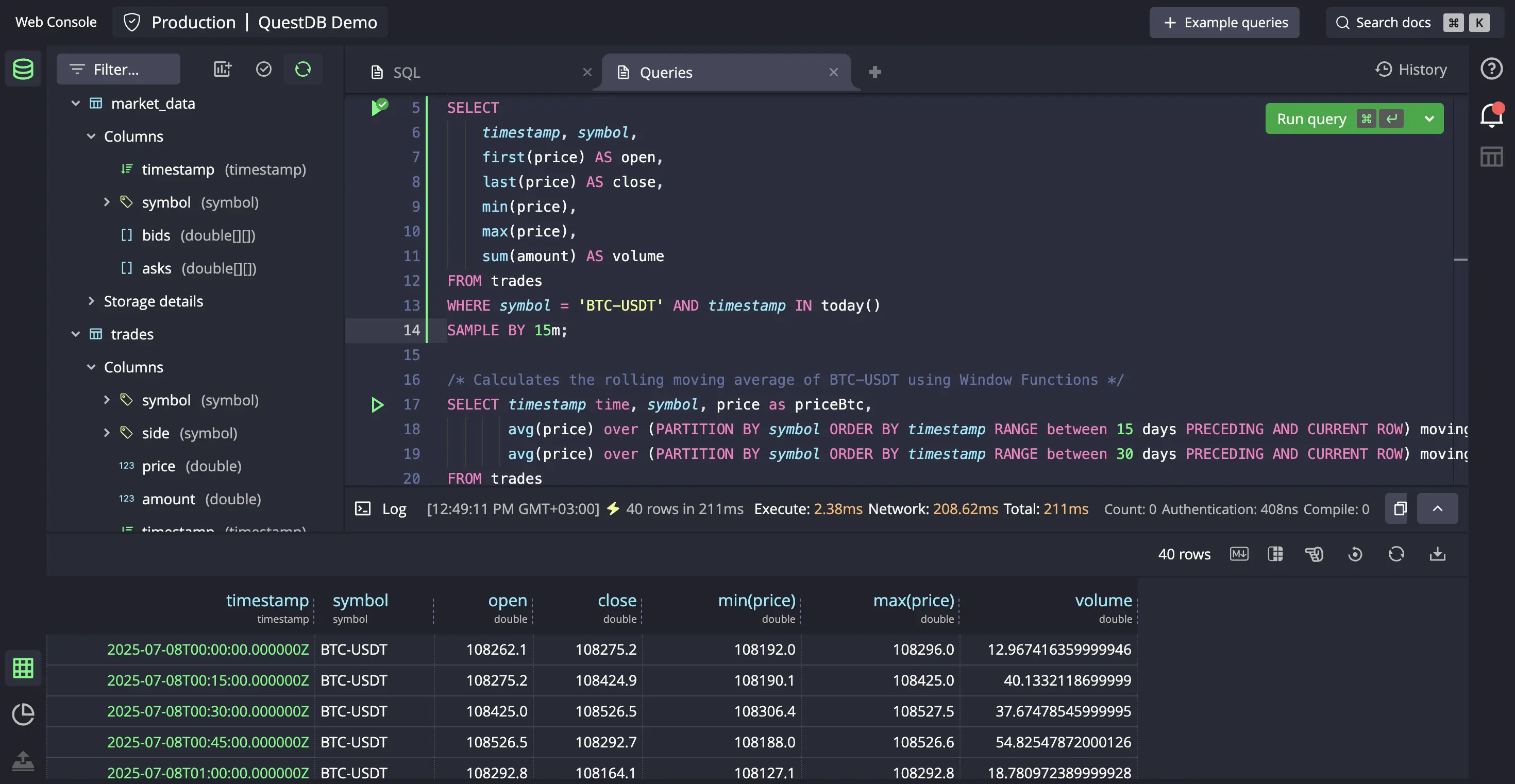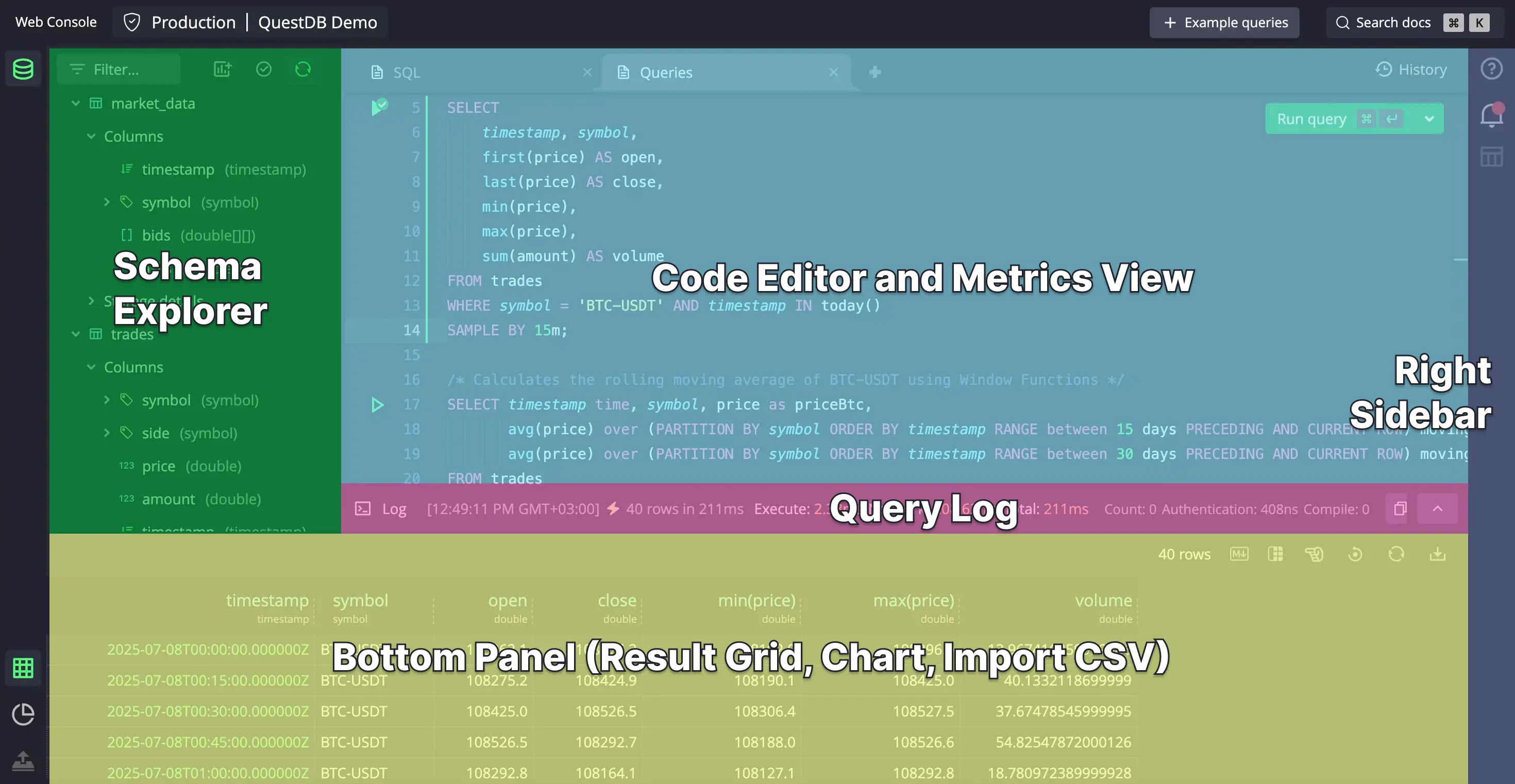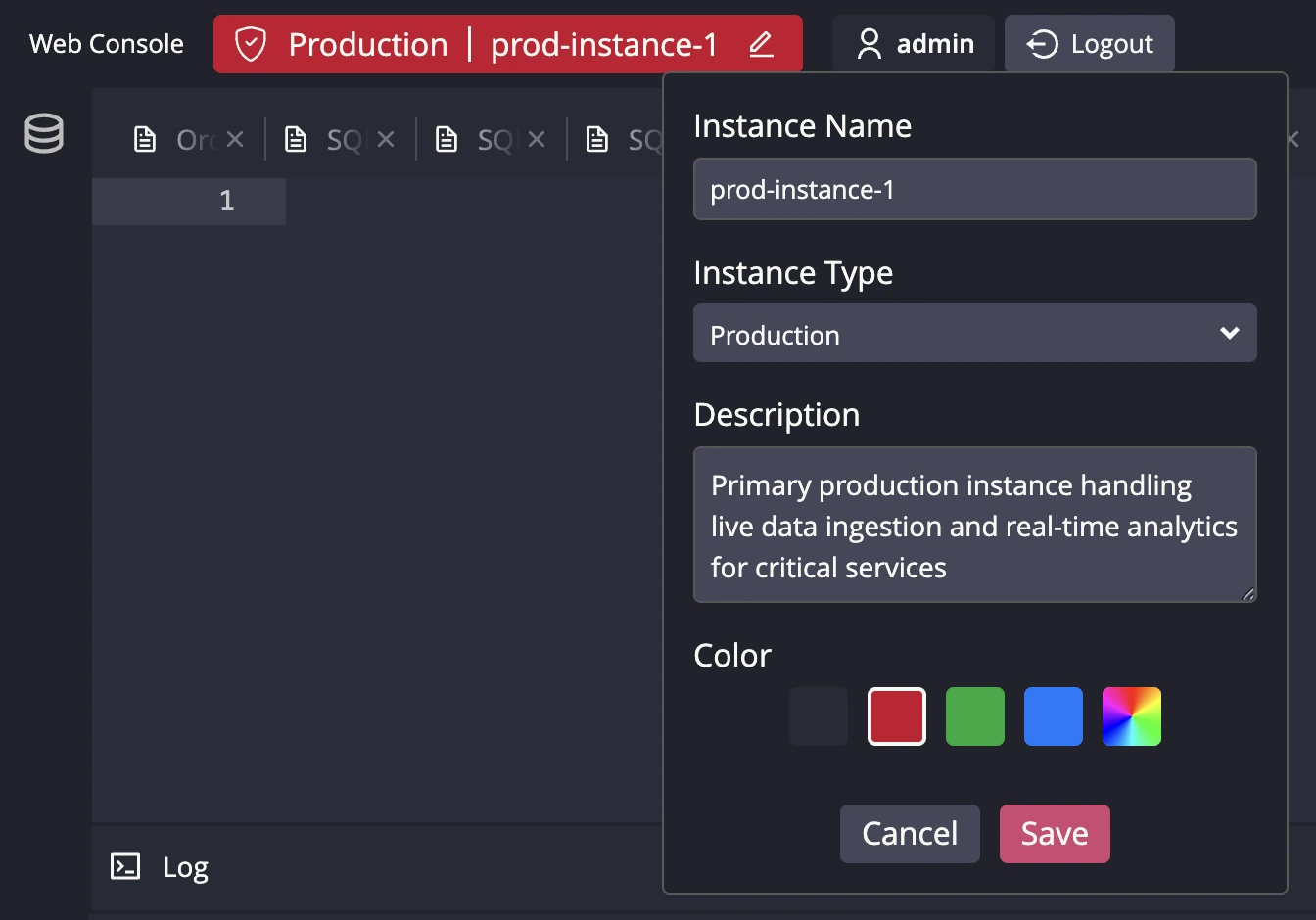Web Console Overview
Web Console is a client that allows you to interact with QuestDB. It provides UI tools to query and explore the data, visualize the results in a table or plot.

Accessing the Web Console
Web Console will be available at http://[server-address]:9000. When
running locally, this will be http://localhost:9000.
Layout

The Web Console is organized into the following main sections that work together to provide a complete workflow:
Code Editor
The Code Editor is where you write and execute SQL queries with features like syntax highlighting, auto-completion, and error tracing. It supports executing queries by selection, multiple query execution, and query planning.
Learn more about Code Editor →
Metrics View
The Metrics View provides real-time monitoring and telemetry capabilities for your QuestDB instance. It displays interactive charts and widgets to track database performance, WAL operations, and table-specific metrics.
Learn more about Metrics View →
Schema Explorer
The Schema Explorer is the navigation hub for exploring tables and materialized views. It provides detailed information about each database object including columns with data types, storage configuration (partitioning and WAL status), and for materialized views, their base tables.
Learn more about Schema Explorer →
Result Grid
The Result Grid displays your query results in an interactive table format with features for data navigation, export, and visualization.
Learn more about Result Grid →
Query Log
The Query Log monitors query execution status and performance metrics, providing real-time feedback and maintaining a history of recent operations. It shows execution times, row counts, and detailed error information to help optimize your queries.
Import CSV
The Import CSV interface allows you to upload and import CSV files into QuestDB with automatic schema detection, flexible configuration options, and detailed progress tracking. You can create new tables or append to existing ones with full control over the import process.
Right Sidebar
The Right Sidebar provides quick access to essential tools and information:
- Help: Access quick links and contact options through a convenient help menu
- QuestDB News: Stay up-to-date with the latest QuestDB announcements and updates
- Create Table: Build new tables visually using an intuitive interface. Define table structure, configure partitioning, enable WAL, and add columns with their data types—all without writing SQL code. Learn more about Create Table →
Instance Naming
Web Console allows you to set the instance name, type, and color. This functionality is particularly useful for production users who manage multiple deployments and frequently navigate between them. This feature makes it easier to keep track of instance information and label instances with meaningful names for their users.
The instance name, instance type, and description are displayed when hovering over the icon in the instance information badge.
Instance information can be modified through the dialog that opens when clicking the edit icon:

If http.settings.readonly configuration is set to true, instance information is not editable.
When using QuestDB Enterprise with Role-Based Access Control (RBAC), only the users with SETTINGS or DATABASE ADMIN permission can edit the instance information. See Database Permissions for more details.